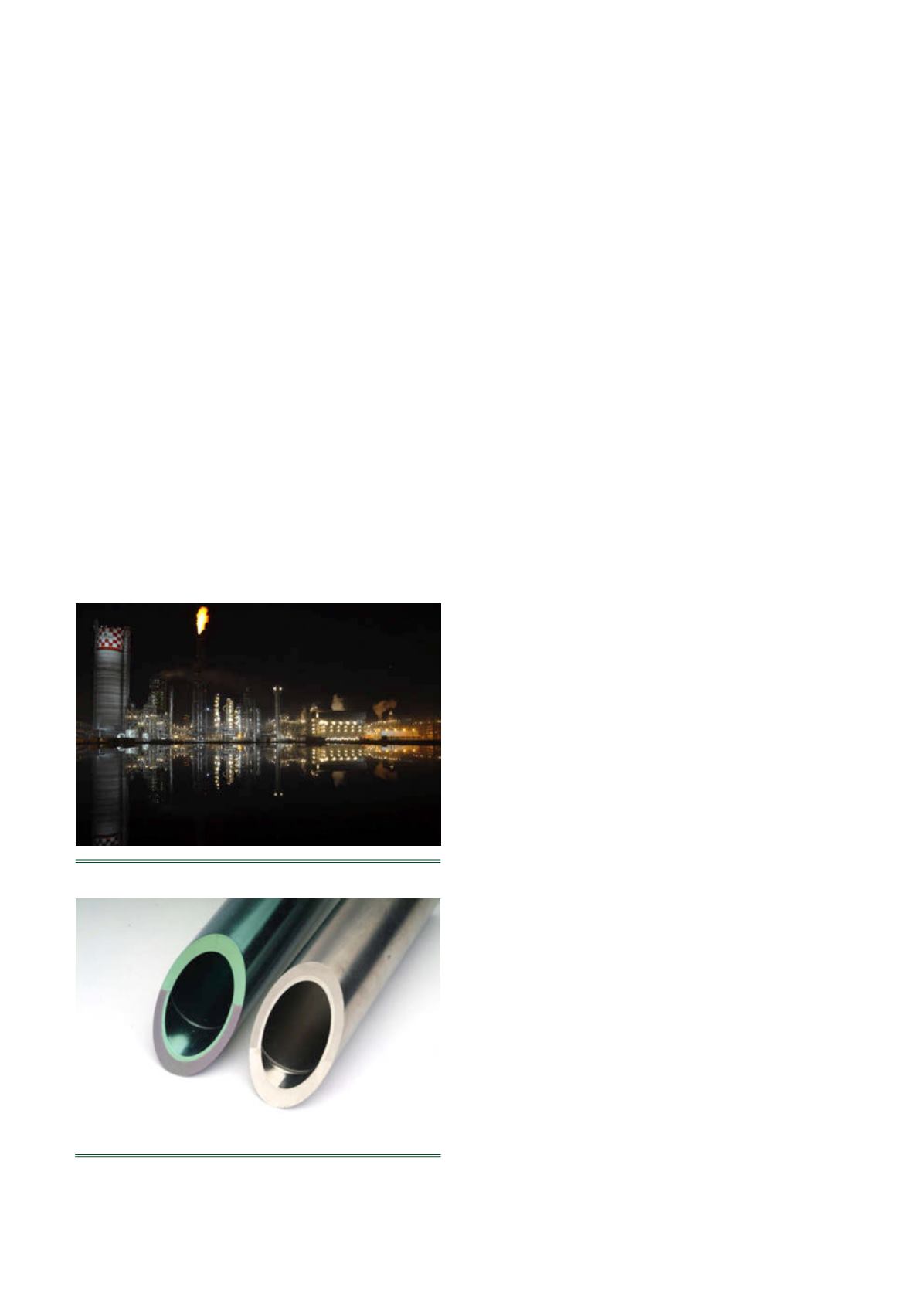
32
| WORLD FERTILIZER |
NOVEMBER 2016
Process solutions
To understand what is required to optimise every aspect of
chemical plant technology, it is necessary to consider the
various elements, including design, management and
start-up, of a fertilizer plant.
Through its proprietary Snamprogetti™ urea technology,
Saipem continued to invest in research to identify new and
efficient process solutions. The company mainly
concentrated on the HP loop section, the ‘core’ of the
synthesis unit.
The results led to the development of two new
innovations by Snamprogetti™ Technology, one for the urea
stripper (Omegabond® Technology) and one for the urea
reactor (SuperCups trays).
Omegabond® technology: urea stripper
The urea stripper is a high-temperature, high-pressure
vertical falling-film heat exchanger, which is often exposed
to highly corrosive conditions during the urea process. The
design comprises titanium and bimetallic strippers, which
are continuously updated and constantly improved.
Following a longstanding collaboration with ATI, Saipem
recently introduced an additional advanced solution for
the urea stripper: the OmegaBond®
tubing technology.
It is well-known that zirconium is the ideal choice for
use in mineral acids, strong bases and organic compounds.
A major application for zirconium is in organic acids, such
as acetic and formic acid. Where zirconium has been used
in organic compounds, experience has shown that the
corrosion rate is essentially nil. Zirconium also has
excellent resistance to ammonium carbamate, a compound
in the urea stripper that is very corrosive to many metals,
including stainless steels. Zirconium is also unaffected by
erosion in the urea stripper, which is commonly seen with
titanium. Numerous corrosion tests performed on
zirconium in organic acids have shown zirconium to have
excellent corrosion resistance even at temperatures
approaching 250˚C.
As titanium has been used for many years in urea
strippers, titanium clad constructed units with solid
titanium tubes are commonly manufactured. The
OmegaBond® stripper used the concept of titanium clad
equipment construction methods with a
titanium-zirconium extrusion bonded tube product. Due to
its strength and weldability, a titanium outer tube product
was employed, likewise a standard titanium clad tubesheet
and a zirconium inner tube liner for optimum corrosion
and erosion resistance was incorporated. The OmegaBond®
tube technology used a solid-state process that
metallurgically bonds the titanium to zirconium via an
extrusion process. This process creates a fully bonded
interface that prohibits solution from seeping between the
tube layers into the annulus between the titanium inner
diameter and the zirconium outer diameter.
Mechanical assessments were performed on the
product, including flattening the samples, bend sampling
and weldability testing. In addition, corrosion testing was
performed in the laboratory to ensure that the bond
interface corrosion would not be affected during
manufacturing of the tube product, welding into the
tubesheet or by the corrosive media in the stripper. Both
test campaigns showed an excellent bonding quality, even
under extraordinary conditions.
The ‘first industrial test’ of this tube solution started in
2005 at Fauji Fertilizer Ltd, Pakistan, whilst the first stripper
installation was at Gulf Petrochemical Industries Co.,
Bahrain. Both applications demonstrated the benefits of the
technology, including the ability to operate using more
severe process conditions, with no sign of corrosion attack;
the reduction of maintenance costs; and, in the instance of
a retrofit design, additional capacity was made available as a
result of attaining a higher recycle within the high synthesis
loop combined with a reasonable pay-back time.
At the time of writing, six installations have been
successfully commissioned in the fertilizer industry.
SuperCups: urea reactor
Urea reactors are non-ideal multi-phase plug-flow reactors
(PFR) that are equipped with dedicated distributors for the
reagents and a number of sieve type trays. These consist of
perforated plates that prevent back-flow of the heavier
solution from the upper part downwards and favour the
gas absorption in the liquid phase.
The central focus of the Snamprogetti™ SuperCups is
the confined reaction space within the reactor tray
geometry, more specifically, in the cups. The SuperCups
perform as a number of mixing units where ammonia is in
Figure 1.
View of urea plant.
Figure 2.
Omegabond® tubes for Snamprogetti
™
urea
plant.


